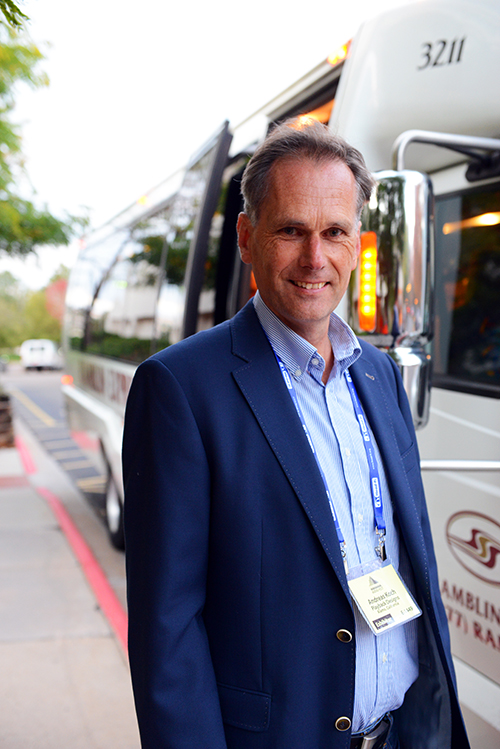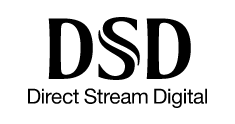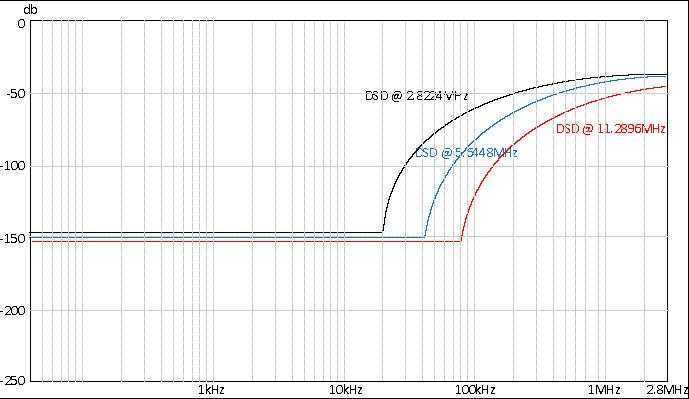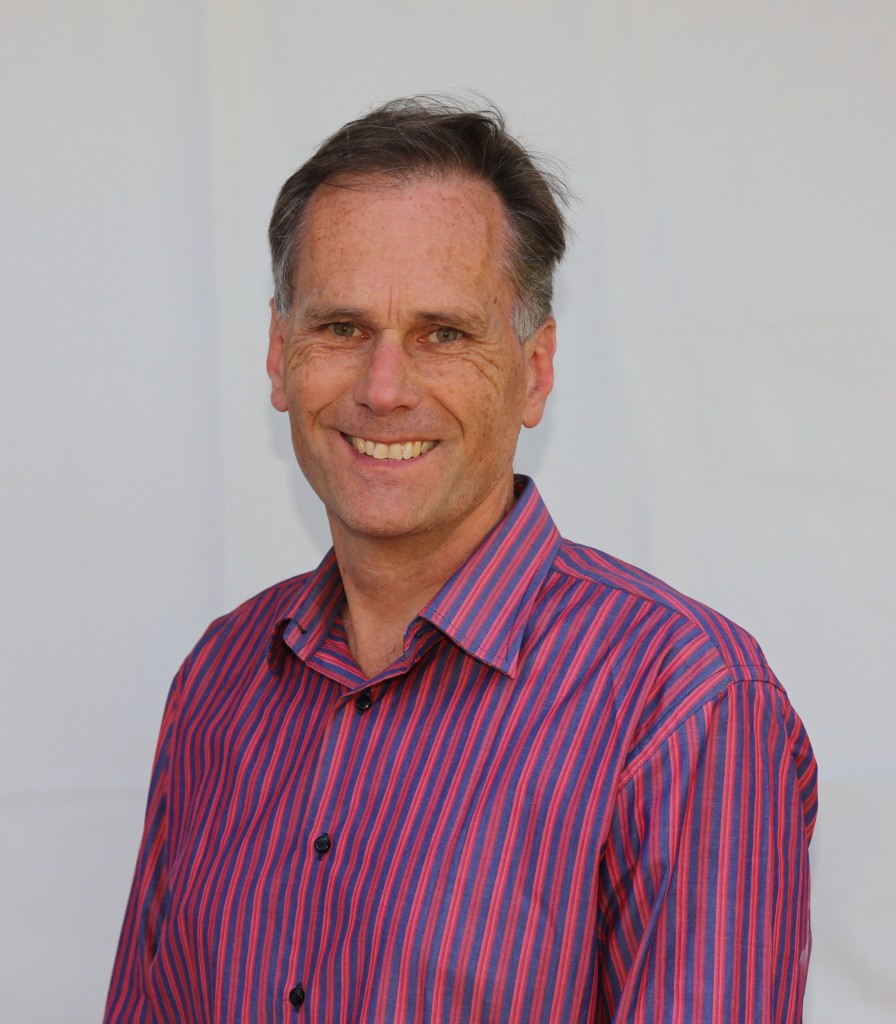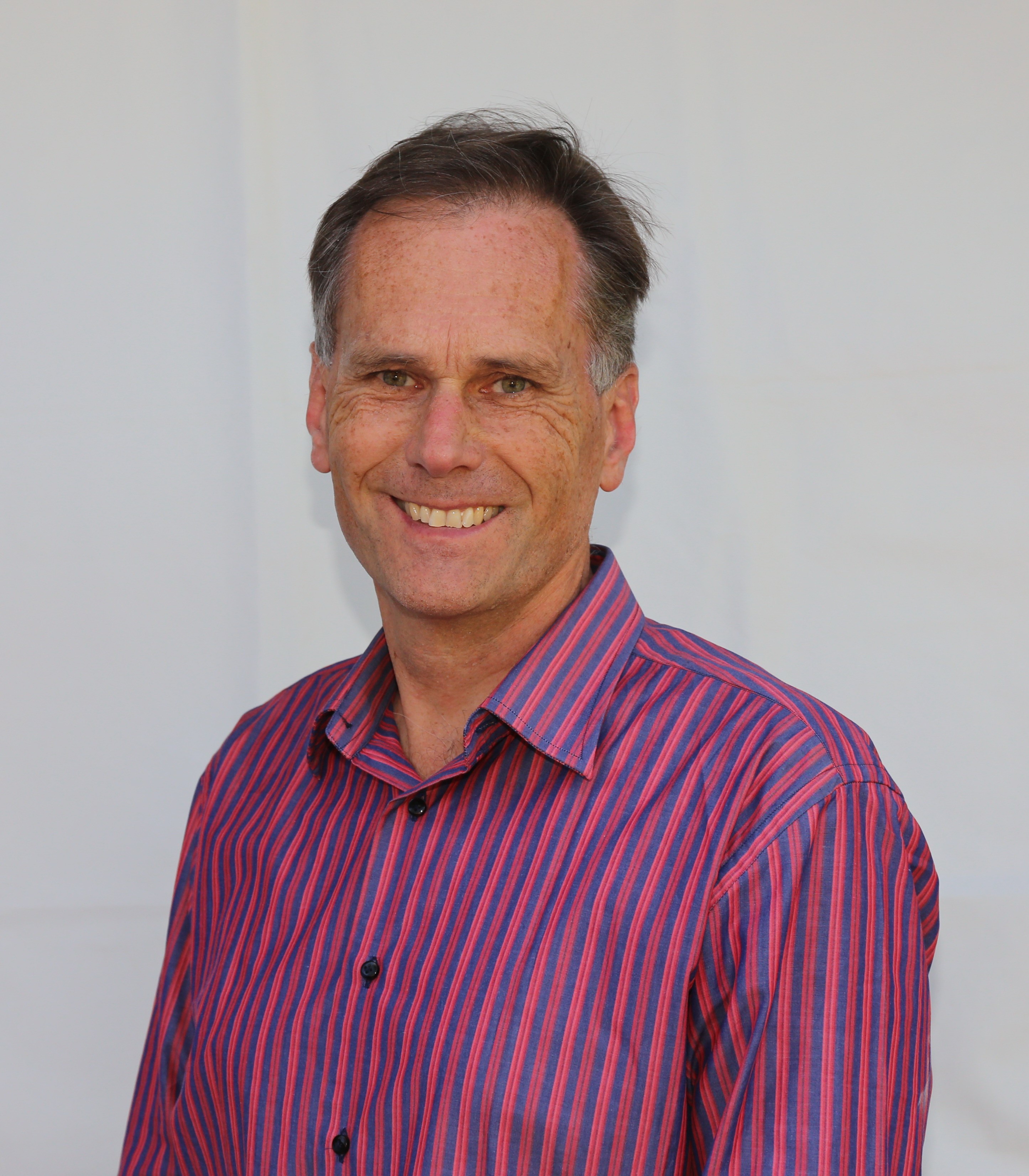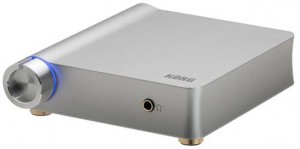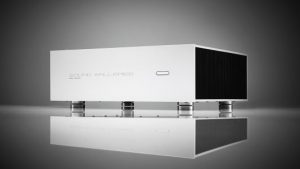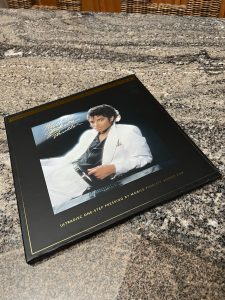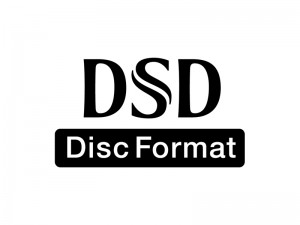Andreas Koch of Playback Designs, RMAF 2014
Direct Stream Digital, or DSD, encoding has been used for years already for SACD and also as an intermediate format inside analog-to-digital and digital-to-analog converters. It's basic concept is Delta-Sigma modulation and uses 1 bit per sample with a sample rate of at least 2.8224MHz (64 x 44.1kHz). A more detailed description of DSD can be found here.
With this article I want to explore the question if there is an ideal sample rate for DSD or whether it should be as high as possible.
The theoretical frequency bandwidth of a DSD signal with a sample rate of 2.8224MHz (64 x 44.1kHz) is 1.4112MHz. However, this very wide bandwidth comes at a price: pure Delta-Sigma signals are quantized to 1 bit and, therefore, do not have a great dynamic range by themselves. That is why Delta-Sigma converters need to incorporate a process called "noise shaping" that increases the dynamic range in the usable audio range (0-20kHz) and then slowly decreases it over higher frequencies. The result is a frequency response that is not flat. It is this noise-shaped delta sigma signal that is then called DSD. Fig.1 below shows the typical dynamic range of a DSD signal sampled at 2.8224MHz (single DSD), at 5.6448MHz (double DSD) and at 11.2896MHz (quad DSD). The slowly rising noise floor at higher frequencies also follows to some degree our hearing threshold for transient signals that have been proven to be audible up to 100kHz.
Figure 1
When DSD was defined as the encoding format for SACD almost 20 years ago state-of-the-art technology only allowed single DSD. Positioning the noise shaping curve at around 20kHz (start of rising noise floor of black curve in Figure) was quite close to the audio band, but appeared to be an acceptable compromise at the time as the overall performance was still a significant step up from the CD Redbook standard.
Fast forward a few years and technology made double DSD possible, and with increasing possibilities to download high-res music via the Internet, end users were able to get recordings in double DSD format into their homes.
Double DSD seemed to "fix" above mentioned compromise that was committed with single DSD by moving the noise shaper from 20kHz up to around 40kHz, well above our standard audio band of 20kHz. It also allowed for gentler and simpler output filters on the DAC. Life became a bit easier and every time that happens in audio we can expect better sonic performance. That is clearly the case with double DSD, and the price of double the data rate seems well worth it.
With a clear improvement from doubling the sample rate of single DSD, it seems natural and, of course, tempting to quadruple the sample rate or go even higher. We should expect the same or similar improvement as from simply doubling the sampling rate again, right?
Not so fast! It turns out there are physical limitations such as electronic component speeds, finite clock slopes, etc., that limit the amount of performance gain we could expect from raising the sample rate above a certain threshold. Such limitations are indeed starting to affect performance with quad DSD in D/A converters. Side effects in the form of audible noise and distortion are creeping into our audio band with quad DSD, greatly overshadowing the small benefit of the noise shaper curve starting at 80kHz. This, of course, is only apparent in D/A converters that convert the DSD signal directly into analog without any conversion to PCM or other digital filtering. To avoid this the quad DSD signal would have to be low-pass filtered and/or converted to PCM before converting it to analog.
None of the commercially available DAC chip sets convert any DSD signal directly into analog, and since most D/A converter manufacturers use these chipsets, they never experience this limitation. But then they also never experience the full potential of the DSD signal either, certainly not with quad DSD, because it is always limited by the filter or digital conversion process inside their chipset. It only becomes apparent when the DAC is built discretely and the DSD signal is converted directly to analog.
The only chance to overcome this limitation on the DAC side would be with a new and custom-integrated chipset, where the component limitations can be better controlled and may not be as severe as in discrete architectures. Unfortunately, this is not an interesting proposition for chipset manufacturers, because the market would be too minuscule for the amount of investment this would take.
If quad and higher DSD signals have to be first digitally processed or converted to PCM in order to convert them to analog, then the question is: is there really an advantage for quad DSD vs. double? We already know the price is yet another doubling of file size, sample rate, etc., and that alone makes it difficult to accept quad DSD as a delivery format.
The answer to this question may not be in the D/A converter, at least not with current technology and chipsets, but it may be in the A/D converter: in order to boost performance for PCM outputs used in mass markets chipset manufacturers have started to invest in analog front ends that run at quad DSD speeds. As mentioned above, electronic component limitations can be better controlled if the entire circuit is inside a single chip. It appears that manufacturers were able to confirm this recently, as they started offering ADC chipsets with a quad DSD front end with impressive performance.
Until fully integrated DAC chipsets are available that convert DSD signals without any digital processing, it appears that the most impact that quad DSD may have is at the A/D converter end of the chain. This means that for now quad DSD may be limited as a delivery format, because direct conversion to analog is still problematic. Double DSD indeed may be the sweet spot, where the noise shaper is pushed high up enough in frequency to make direct analog conversion easier, and the data rate and file sizes are not excessive yet. For now Quad DSD may have its place only as an intermediate format inside the ADC chipset, where it can lead to better sounding recordings even when the delivery format is downsampled.
About the author: Andreas Koch has been involved in the creation of SACD from the beginning while working at Sony. He was leading a team of engineers designing the world's first multichannel DSD recorder and editor for professional recording (Sonoma workstation), the world's first multi channel DSD converters (ADC and DAC), and participated in various standardization committees world-wide for SACD. Later he went on as a consultant to design a number of proprietary DSD processing algorithms for converting PCM to DSD and DSD to PCM, and other technologies for D/A conversion and clock jitter control in DACs. In 2008 he co-founded Playback Designs to bring to market his exceptional experience and know-how in DSD in form of D/A converters and CD/SACD players. In 2015 he took over the entire company. Earlier he was part of an engineering team at Studer in Switzerland designing one of the world's first digital tape recorders, then lead a team of engineers working on a multichannel hard disk recorder. A 3-year stint at Dolby as the company's first digital design engineer gave him a well-rounded foundation of audio know-how and experience. He can be reached at [email protected].




